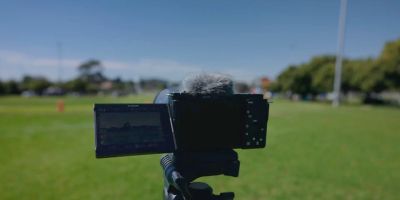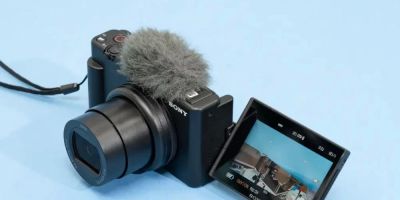- Why Drone Photography Is So Popular
- Choosing the Right Drone for Photography
- Best Cameras for Drone Photography
- Must-Have Accessories for Drone Photography
- Top Drone Photography Tips for Stunning Shots
1. Why Drone Photography Is So Popular
Drone photography has revolutionized the way we capture the world from above. With the ability to access angles and perspectives that were once limited to expensive helicopters or planes, drones have made aerial photography accessible to both professionals and hobbyists alike. From stunning landscapes to architectural photography, drone shots bring a unique and captivating perspective to every subject.
In recent years, drone photography has gained immense popularity for its versatility, cost-effectiveness, and ease of use. Whether you’re capturing sweeping cityscapes, dramatic mountain ranges, or intimate close-ups of nature, drones offer unparalleled flexibility and creativity. As drone technology continues to improve, the equipment available for photography purposes becomes more powerful, compact, and affordable, making it an ideal tool for both seasoned photographers and beginners.
If you're looking to get started with drone photography or upgrade your gear, Photo Studio offers expert recommendations and the best products to help you achieve professional-level results.
2. Choosing the Right Drone for Photography
When selecting the best drone for photography, there are several factors to consider to ensure you get the best results. Here are some key features to look for:
2.1 Camera Quality
The camera is one of the most important components of any drone used for photography. The quality of the camera determines the sharpness, color accuracy, and overall image quality of your photos. Look for drones with high-resolution cameras (at least 12 MP or higher) and the ability to shoot in 4K resolution for the best image quality. Additionally, consider drones with adjustable camera settings, such as ISO control and aperture adjustments, for more creative control over your shots.
2.2 Stability and Flight Time
Stability is essential for capturing smooth, clear images. Drones with advanced stabilization systems, such as gimbals, help reduce camera shake and vibrations, ensuring professional-quality footage. Additionally, longer flight times (20-30 minutes or more) are crucial for capturing a variety of shots without the need to constantly land and recharge the battery. Be sure to choose a drone with stable flight capabilities to ensure your photos are crisp and well-framed.
2.3 GPS and Intelligent Flight Modes
GPS functionality is essential for precise flight control and navigation. Look for drones with GPS-based flight modes that allow for automatic return-to-home features, waypoints, and other intelligent flight modes. These features make it easier to plan and execute complex aerial shots, especially in difficult-to-reach locations. Intelligent flight modes like Follow Me, Orbit, and Point of Interest also help create dynamic shots with minimal effort.
3. Best Cameras for Drone Photography
Choosing the right camera for your drone is critical to achieving high-quality aerial photographs. Here are some of the best cameras for drone photography that are worth considering:
3.1 DJI Mavic Air 2
The DJI Mavic Air 2 is one of the most popular drones for photography, thanks to its exceptional camera quality, advanced flight features, and compact design. It boasts a 48 MP camera capable of shooting 4K video at 60fps. With a 3-axis gimbal for stabilization, it delivers smooth footage and sharp, detailed images. The Mavic Air 2 also has a long battery life, with up to 34 minutes of flight time, making it ideal for capturing a wide range of shots.
3.2 DJI Phantom 4 Pro V2.0
The DJI Phantom 4 Pro V2.0 is a powerful drone with an impressive 1-inch 20 MP sensor capable of shooting 4K video at 60fps. This drone is known for its incredible stability, precise flight control, and excellent camera performance in both daylight and low-light conditions. If you're a professional photographer looking for superior image quality and advanced flight features, the Phantom 4 Pro V2.0 is an excellent choice.
3.3 Autel Robotics EVO II Pro
The Autel EVO II Pro offers exceptional camera quality with a 50 MP camera and 8K video recording capabilities. Its large 1-inch sensor allows for great low-light performance and highly detailed images. The EVO II Pro also offers impressive flight time of up to 40 minutes, making it one of the top contenders for professional drone photographers looking to capture stunning aerial shots with incredible detail.
4. Must-Have Accessories for Drone Photography
In addition to the drone itself, there are several accessories that can enhance your drone photography experience and help you achieve the best results:
4.1 Extra Batteries
Having extra batteries on hand is essential for extended flying sessions. Most drones only offer 20-30 minutes of flight time on a single charge, so having spare batteries ensures that you can keep shooting without interruptions. Be sure to choose high-quality, compatible batteries that are easy to swap out during your sessions.
4.2 ND Filters
Neutral Density (ND) filters are essential for controlling exposure and achieving cinematic shots in bright conditions. These filters reduce the amount of light entering the camera, allowing you to use slower shutter speeds and achieve smooth, motion-blurred footage without overexposing your images. ND filters are particularly useful for shooting in bright, sunny environments or capturing long-exposure shots.
4.3 Propeller Guards
For beginners or those flying in tight spaces, propeller guards are a must-have accessory. These protective guards prevent damage to the propellers and reduce the risk of accidents during flight. They can also help protect your drone in case of accidental collisions with obstacles, especially in more challenging environments.
5. Top Drone Photography Tips for Stunning Shots
To help you make the most of your drone photography equipment, here are some essential tips for capturing stunning aerial shots:
5.1 Use the Golden Hour
The golden hour—the time just after sunrise and just before sunset—is the best time for capturing dramatic and beautiful drone photos. The soft, warm light creates a magical atmosphere, casting long shadows and enhancing colors. Plan your shoots around these times to get the best possible lighting for your aerial shots.
5.2 Experiment with Angles and Perspectives
One of the biggest advantages of drone photography is the ability to capture unique perspectives. Don’t just stick to traditional straight-on shots. Experiment with different angles, such as shooting from above, below, or at an angle, to create dynamic compositions. You can also try flying your drone at different altitudes to change the scale and mood of your images.
5.3 Plan Your Flight Path
Before launching your drone, take time to plan your flight path. This allows you to capture the best angles and ensures that you avoid obstacles during your shoot. Pre-planning your flight path also helps you make the most of your battery life, as you can minimize unnecessary movements and focus on capturing the shots you need.
If you're ready to elevate your drone photography and need the best equipment, visit Photo Studio for expert recommendations, top-notch drones, and accessories to enhance your aerial shots.





